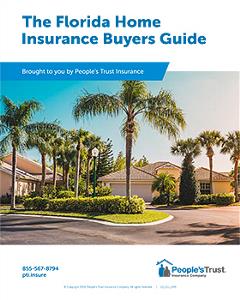Home Insurance Buyers Guide Hub
What Does an HO3 Insurance Policy Cover?

Most homeowners’ first (and sometimes only) experience with home insurance is a special form HO3 policy, or simply an “HO3.” In fact, HO3 policies are the most commonly purchased homeowners insurance for owner-occupied single-family homes and townhouses. Every individual policy is unique—but generally speaking, HO3 coverage is designed to financially help you:
- Repair or rebuild your home after damage from a covered peril (usually labeled in your policy’s verbiage as “Coverage A”).
- Repair or rebuild structures on your property, like fences or detached garages after damage from a covered peril (Coverage B).
- Replace all your personal possessions if they are stolen, vandalized, or damaged by a covered peril (Coverage C).
- Cover living expenses if damages make your home uninhabitable (Coverage D).
- Pay for legal expenses if you are sued over someone’s injuries or property damage (Coverage E or personal liability).
- Make medical payments if guests are injured on your property (Coverage F).
What types of perils does an HO3 policy cover?
Usually, HO3 policies are written on an open-perils basis for your home and other structures (Coverages A & B). This means that if a peril isn’t listed as an exclusion by the policy, your insurance company can pay for damages.
Personal property protection on the other hand, is typically written on a named-perils basis. If you look at the Coverage C section of your policy, there should be a list of specific perils that are covered by your insurer. So unlike open-perils coverage, if your personal possessions are damaged by an event that’s not on that list of named-perils, it’s not covered.
Again, every policy is different, so it’s best if you contact your insurer if you ever have any questions about your coverage. But, most named-perils plans tend to use the following 16-point list:
- Fire or lightning
- Windstorm or hail
- Explosion
- Riot or civil commotion
- Damage caused by aircraft
- Damage caused by vehicles
- Smoke
- Vandalism
- Theft
- Volcanic eruption
- Falling object
- Weight of ice, snow, or sleet
- Accidental water overflow or steam
- Sudden and accidental tearing apart, cracking, burning, or bulging of certain household systems (e.g. plumbing, heating, air conditioning, etc.)
- Freezing
- Sudden and accidental damage from electrical current
How is an HO3 policy different from other types of homeowners insurance?
The main reason why HO3 policies are so popular is because they offer an excellent balance of reliable, affordable coverage against a broad range of risks. However, depending on your coverage needs and kind of home you have, another type of home insurance may be a better fit.
Your insurer can work with you to figure out your needs and the type of policy that’s the best match. Below, we’ve summarized what makes other types of home insurance policies different from an HO3.
- HO1 policies only offer named-perils coverage for your home.
- HO2 policies only offer named-perils coverage for your home and personal property.
- HO4 policies (renter’s insurance) cover personal property and liability, but not the home itself. Some HO4 policies also include Coverage D.
- HO5 policies are like HO3 policies, but they offer higher limits and cover a broader range of perils. They are usually recommended for brand-new homes.
- HO6 policies are like HO3 policies, but they are specifically for condominiums and the dwelling coverage they offer only applies to the interior of the home.
- HO7 policies are like HO3 policies, but they are specifically for mobile homes.
- HO8 policies are like HO3 policies, but they are specifically for older or historically significant homes.


